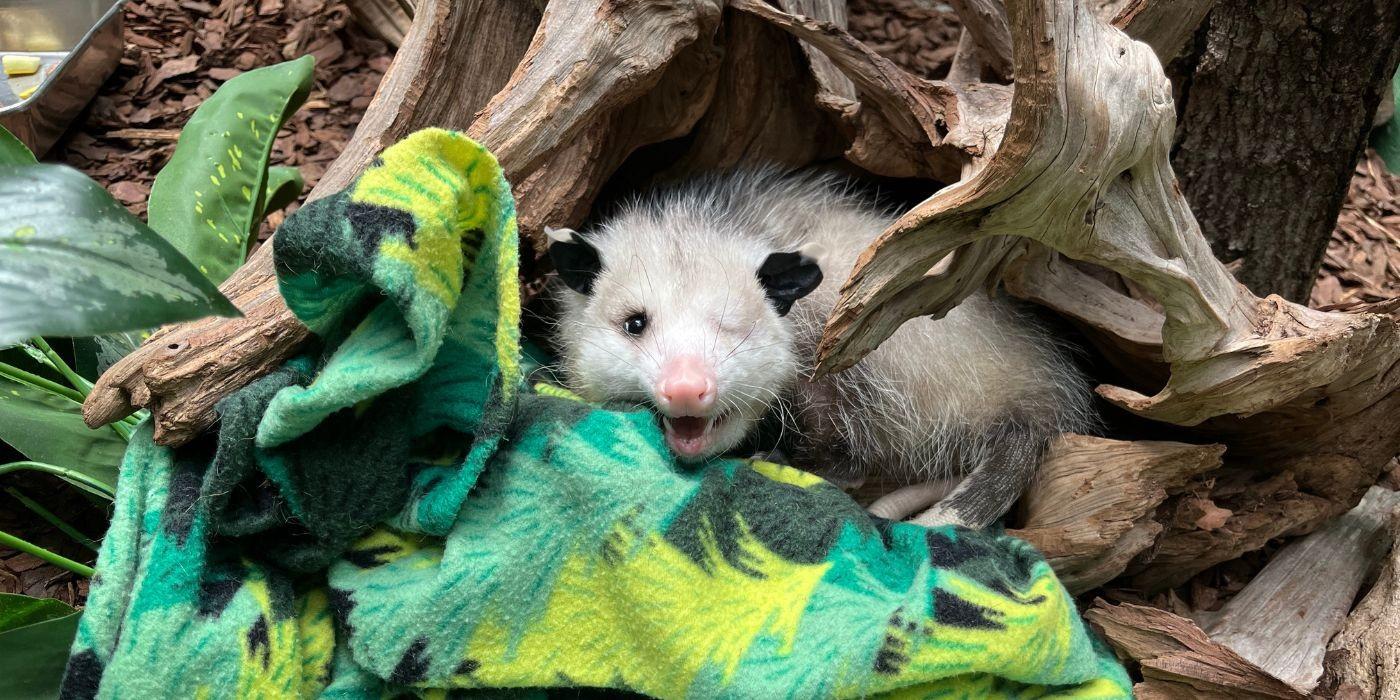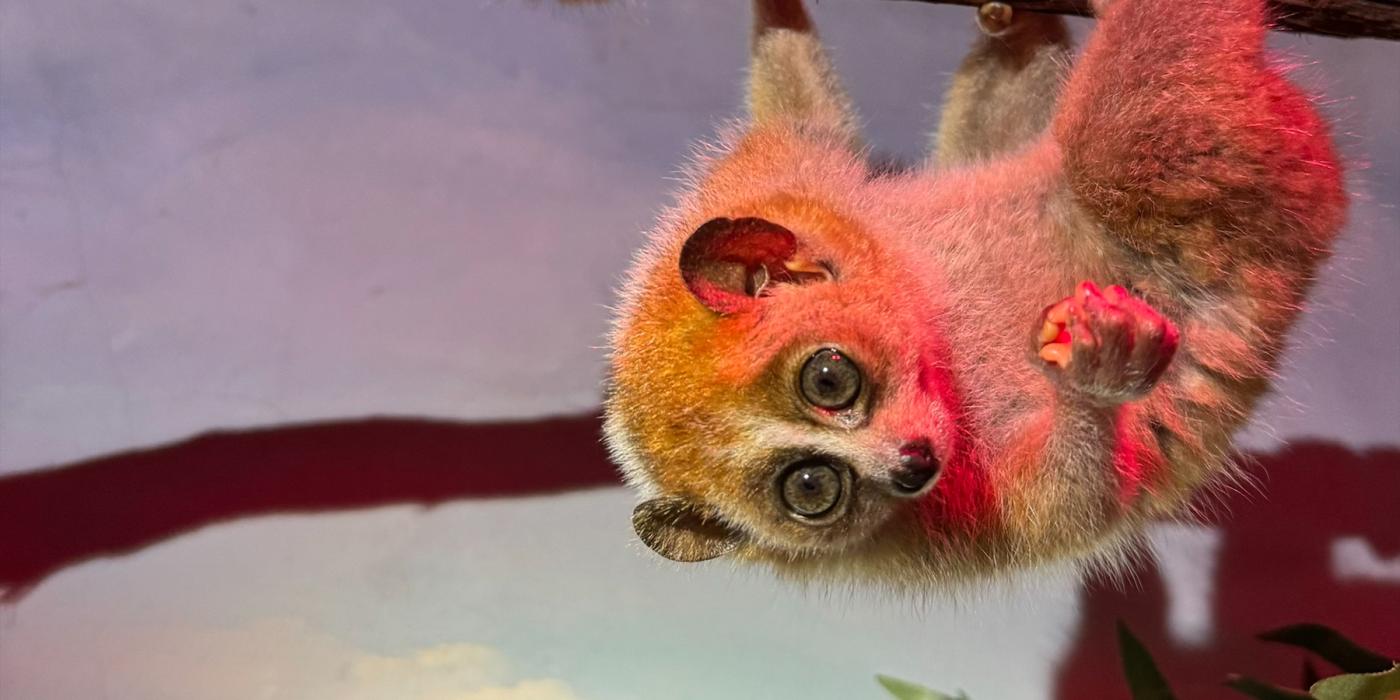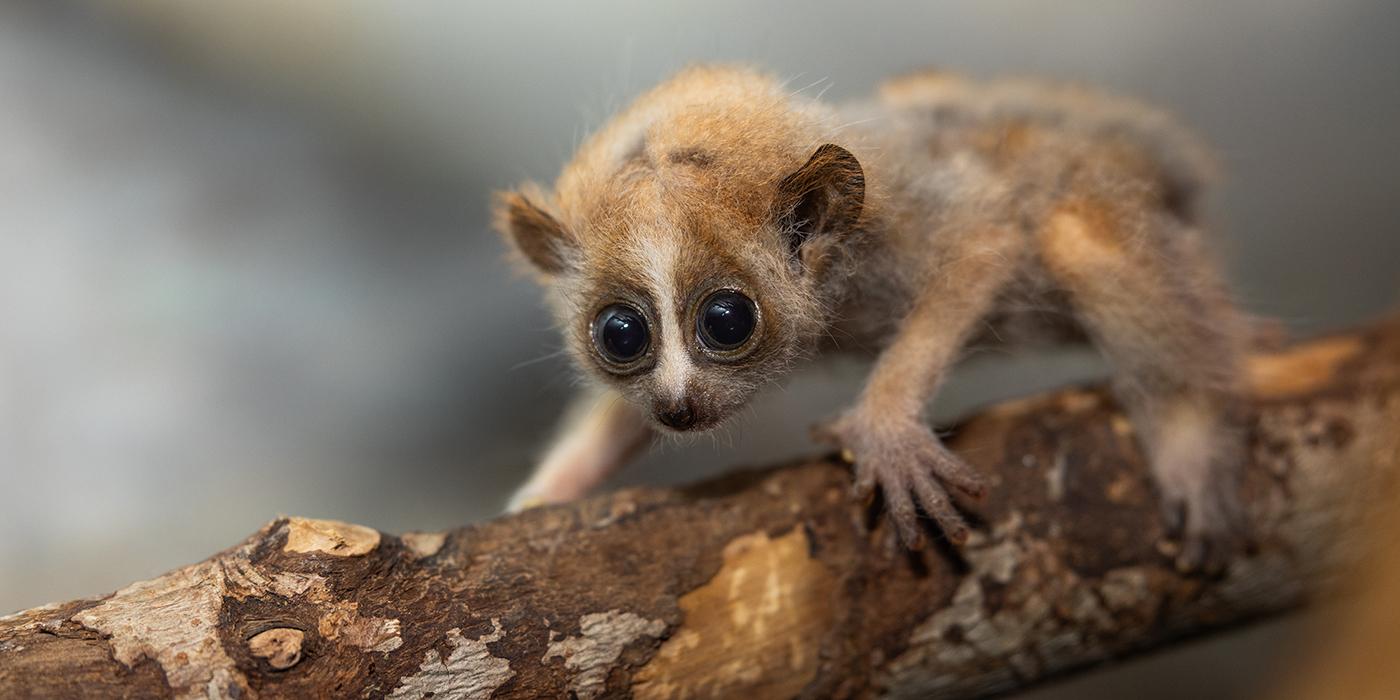New at the Zoo: Tamandua
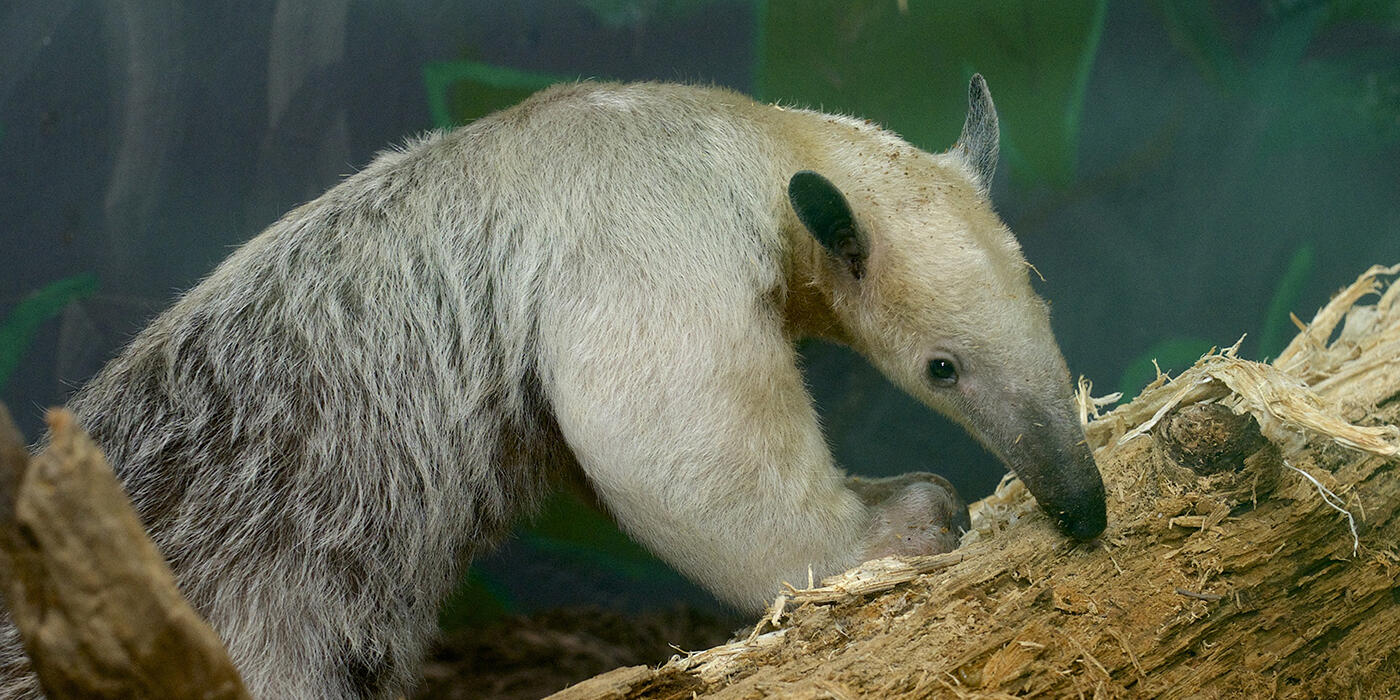
She’s a sweet-natured, eager explorer with a taste for juicy wax worms. Meet Chiquita, the Smithsonian’s National Zoo’s new tamandua! The 1.5-year-old female arrived from Point Defiance Zoo and Aquarium in Washington after receiving a recommendation to breed with our male Cayenne. Get to know our new gal’s personality quirks and boost your tamandua IQ in this Q+A with Small Mammal House keepers Chelia Chong and Mimi Nowlin and assistant curator Kenton Kerns.
What are some of your favorite facts about tamanduas?
Tamanduas primarily consume ants and termites, and in the wild they can eat as many as 9,000 insects a day! With such a specialized diet, tamanduas have some unique adaptations for eating. Since their mouth only opens to about the width of a pencil eraser, they have a 16-inch long, sticky tongue that allows them to navigate ant and termite nests and quickly consume their prey.
These animals are also arboreal, which means they spend most of their time living in trees. To help them maintain their footing and balance as they climb, they use their prehensile tail which acts as an extra limb.
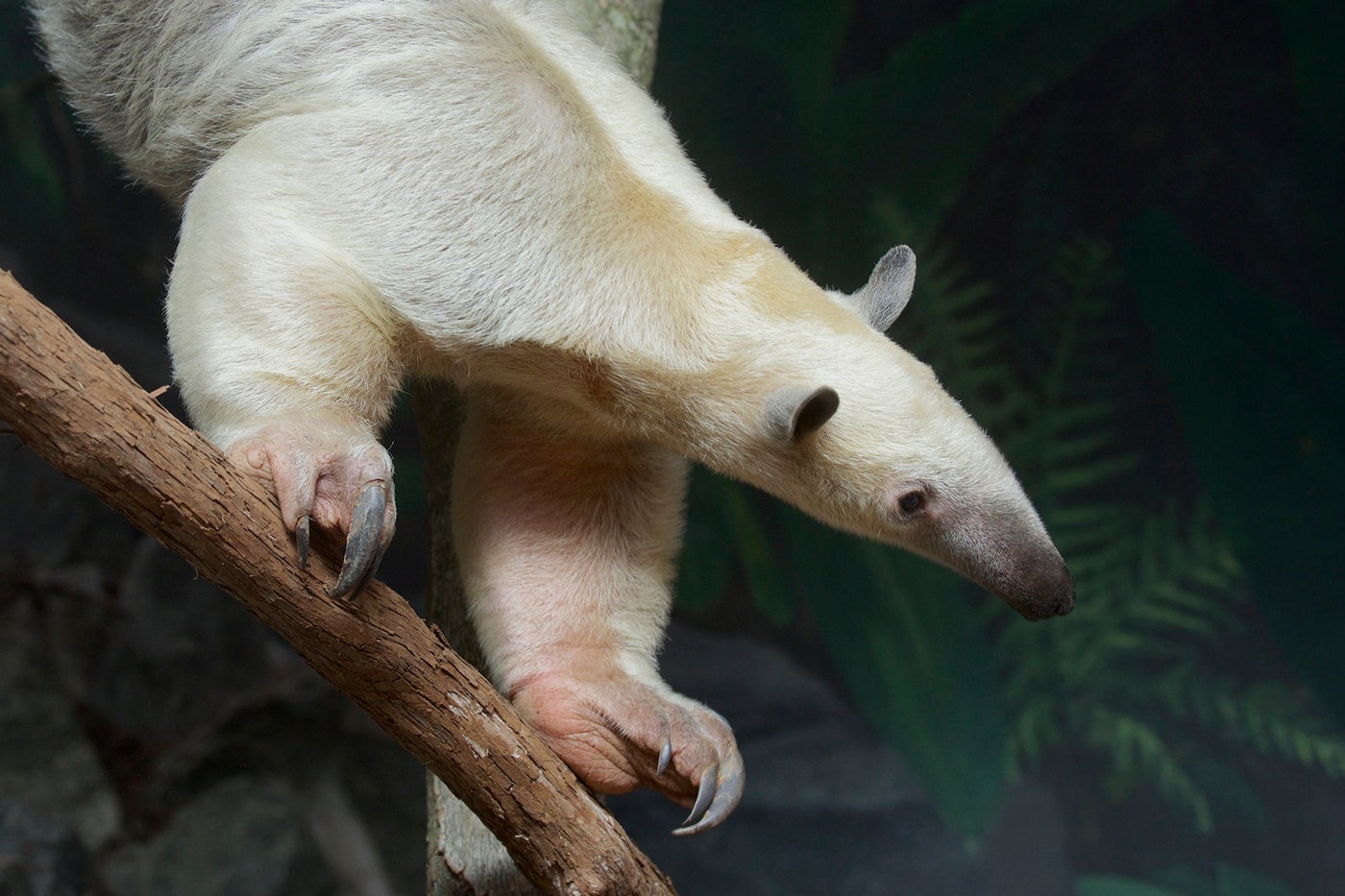
What are our tamanduas’ personalities like?
Chiquita was hand-raised, so she is very accustomed to human attention and seems to enjoy spending time with keepers. Even with those big claws, she is always very gentle and sweet with us whenever we handle her. Chiquita is curious about her surroundings and pays close attention when we enter her habitat to clean and provide her with food and enrichment toys. She enjoys her sleep but will wake up and watch us as we go about our daily tasks. We are getting her acclimated to being in the public space so that she can come out and help teach visitors about tamanduas. Whenever we bring her out, she is eager to explore the keeper area and public walkways!
Her beau-to-be, 6-year-old male Cayenne, is powerful, with large muscular limbs that help him maneuver through his habitat. He is also bold and inquisitive. If Cayenne is awake, he will follow keepers around his exhibit to see what we are doing and if we have any delicious mealworms for him.
At 15 years of age, Manny is our oldest tamandua and a fantastic ambassador for his species. He is very sociable and is typically seen interacting with his keepers and playfully wrestling with Cayenne. Manny is also incredibly calm and an overall rock star. He voluntarily participates in animal demonstrations, allowing visitors to have an up close and personal experience with him.
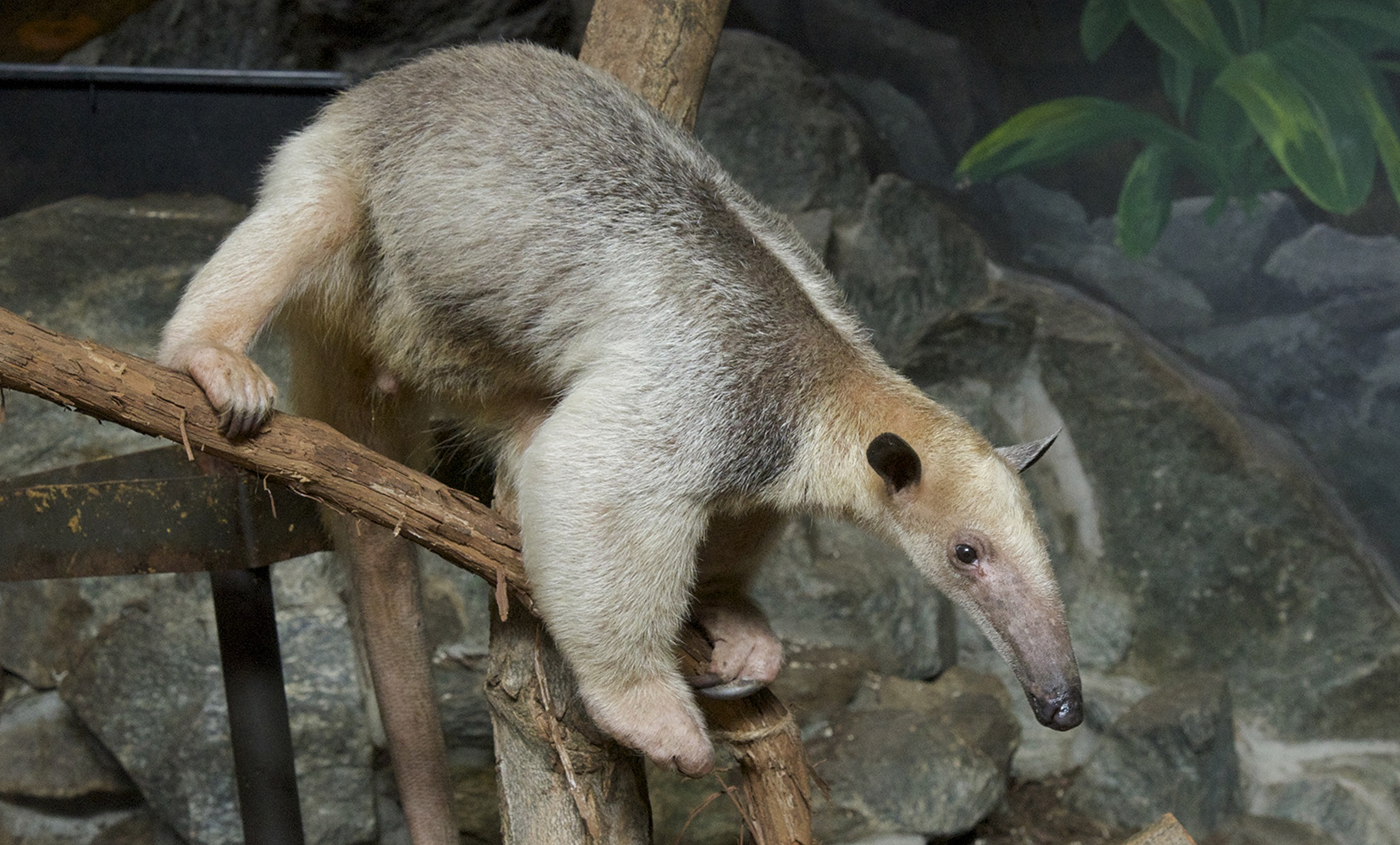
How do you tell them apart?
Chiquita is currently the largest tamandua at the Small Mammal House and has distinct black fur on both of her sides over a blonde coat. Manny has a light black strap across his back over top of his blonde fur and is the smallest of our tamanduas. Lastly, Cayenne is completely blonde and has a strong muscular build.
What do the Zoo’s tamanduas eat?
All three of our tamanduas receive a mix of nutrient-fortified insectivore pellets, meal worms and wax worms every day. The latter are a bit fattier than meal worms and are one of Chiquita’s favorite foods. We hide their diet inside enrichment items to encourage our animals to explore their habitat and forage using their visual, olfactory and tactile senses. The puzzle feeders she interacts with the most are slow feeders, cactus wood feeders and tube-like items that she can maneuver her long tongue into to get the tasty treats inside.
While the male tamanduas readily eat their pellets with the water soaked in thoroughly, Chiquita prefers when we add the water to her pellets right before we feed her in the afternoon. She enjoys them a little bit crunchy!
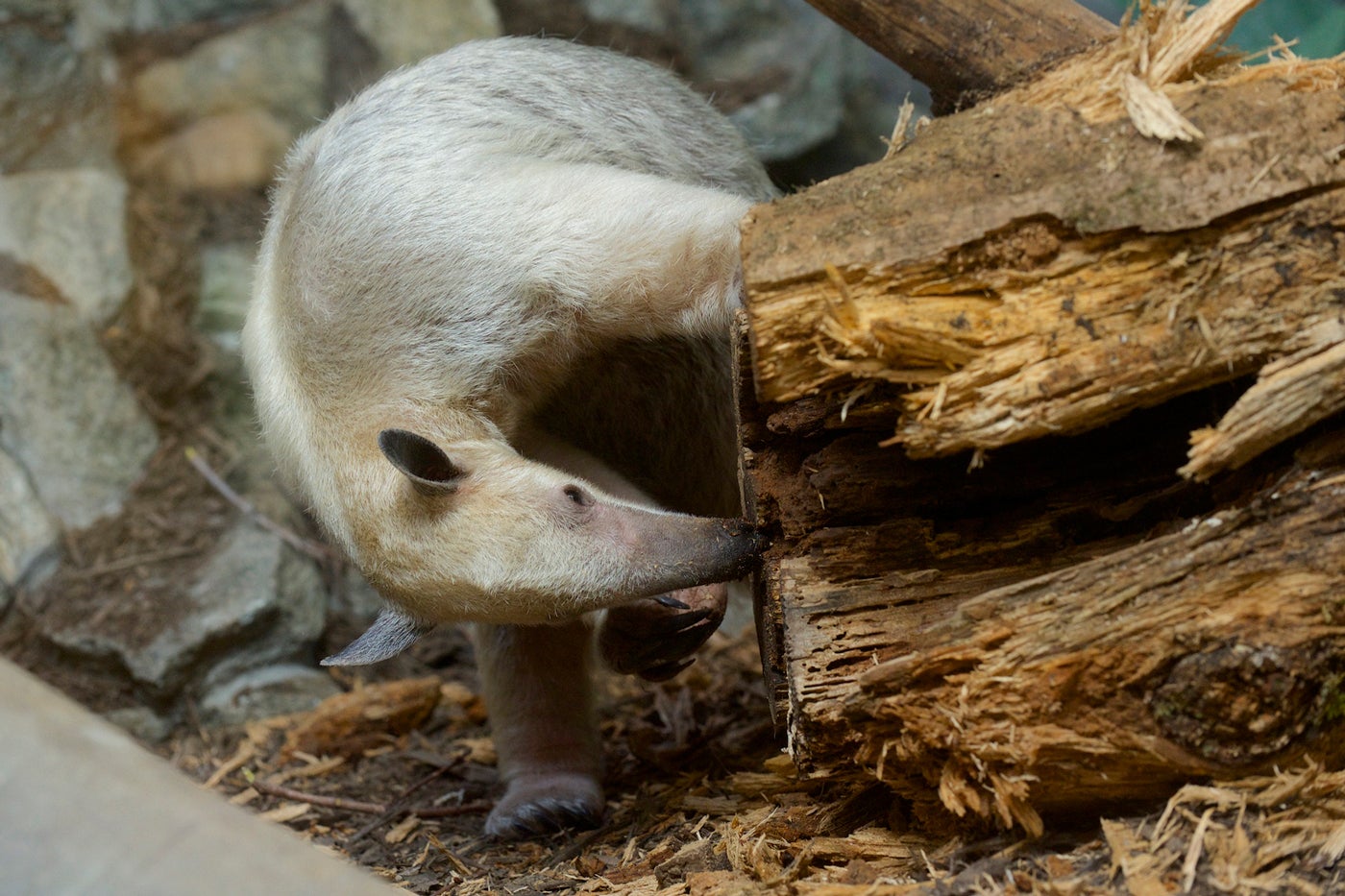
Does Chiquita participate in training sessions?
Lucky for us, Chiquita came to the Smithsonian’s National Zoo already trained to be handled by keepers. She is also crate trained, which is very useful for obtaining her weight on a routine basis and transferring her to the hospital for exams.
We have not started training other behaviors just yet. We are still strengthening our bond with Chiquita, getting to know how her likes and dislikes. This will help us better create a list of behaviors we would like to train her to do. Our first goal will be training her to use our demo stand. We do not anticipate this to be difficult with her easygoing nature!
I want to help tamanduas! What can I do?
Although tamanduas are considered “least concern” by the International Union of Conservation of Nature, they and other wild animals still need our help to survive and thrive in their native habitats. One way to help all wildlife—regardless of where you live—is to plant native trees, bushes and flowers in your area to help local animals feel more at home. Picking up litter, whether it belongs to you or was left by others, can also help keep wildlife safe from ingesting materials that may cause them harm.
While tamanduas are cute, they require specialized care and do not make good pets. Unfortunately, many die while being transferred illegally across borders. By sharing our tamanduas’ stories, you can help raise awareness about these animals and the threat they face from the illegal pet trade. Inspiring others to care about these creatures will enable all of us to become better stewards of our planet and, ultimately, help save species and their habitats.
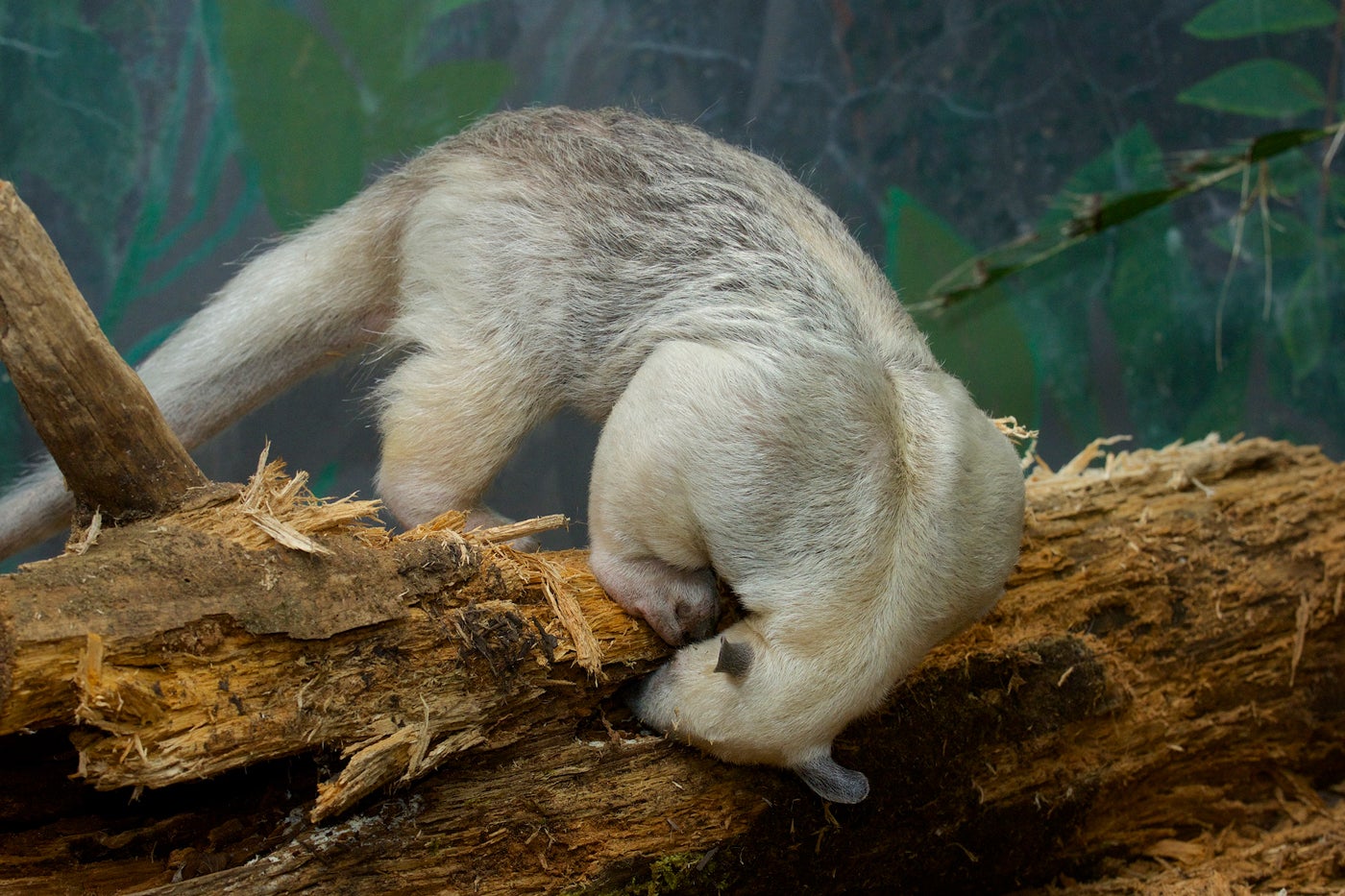
How can I meet Chiquita?
Come visit our tamanduas at the Small Mammal House! We can’t wait for the Zoo to be able to safely reopen so everyone can meet our lovely Chiquita. It will be quite a surprise for her to see people wandering through the public area since she has only lived here while our building has been closed. Based on how she likes to watch us, she may be spending lots of time watching our visitors!
This story appears in the February 2021 issue of National Zoo News. Our whole team works diligently to care for our animals and keep you connected to the Zoo. With your support, our conservation mission continues. If you can, please join us in this important work by making a donation today. On behalf of the animals we care for and work to protect: thank you.
The Smithsonian’s National Zoo is temporarily closed to help prevent the spread of COVID-19.
Related Species:

